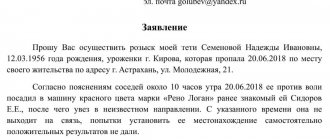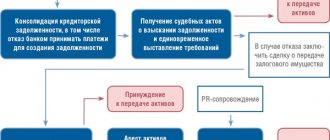What is hostage taking
By hostage-taking, the Criminal Code means a socially dangerous action consisting in the forcible restriction of a person’s freedom in order to force the state to carry out certain actions or to restrain them from carrying them out. The crime is regulated by Article 206 of the Criminal Code of the Russian Federation. According to its content, the object of the crime is public safety.
The article also includes an additional object, which is human life and health. The objective side is to capture a person and hold him with (or without) the use of violence, threats and weapons. When a hostage is taken, the criminal always puts forward a certain demand, the fulfillment of which determines the further fate of the victim and the actions of the attacker. The taking of a hostage can be secret or accompanied by publicity.
The objective side may include not only mandatory, but also optional features, such as the method of committing the crime, the time of its implementation, as well as the chosen instruments. The crime is considered completed not at the moment of committing actions aimed at restricting freedom of movement, but at the moment the demands are made.
The subject of the violation can be a 14-year-old sane person. The subjective side is represented by direct intent. It implies the presence of a special goal - coercing the state or specific citizens to commit an action that is contrary to their interests in the conditions of the release of the hostage. Sometimes terrorists' demands may seem absurd and impossible to fulfill (for example, to create a new republic). At the same time, the state, represented by the relevant services, is forced to take extreme measures in the interests of people who are in the hands of an attacker.
The legislator defines this crime as especially dangerous and implies a punishment for it in the form of imprisonment from 5 to 10 years. If there is a qualifying offense, the offender faces from 8 to 12 years with a restriction of freedom of up to two years. If the actions of terrorists entail the death of a hostage or other dangerous consequences, then the punishment will be from 15 to 25 years. In rare cases or where there is a combination of violations, a judge may impose a life sentence.
The state gives criminals a chance to avoid responsibility if they release the hostage. At the same time, attackers can release victims either on their own initiative or at the request of the state.
How to avoid charges of unlawful retention of someone else's property
When using property that is not owned by right of ownership, you must do the following in advance:
- Discuss in advance with the owner the nuances of use in the presence of a reliable witness who is ready, if necessary, to confirm the terms of the agreement in court.
- Draw up a bilateral agreement that specifies the rights, obligations, terms of payment and use of the property (if this is an agreement between the tenant and the landlord or the customer and the contractor) and other points.
- Sign the drawn up agreement.
- Leave each other alternative means of communication in case of emergency.
The listed stages of the transaction are mandatory; this will help preserve the relationship between the parties.
The drawn up agreement does not have to be notarized, since such transactions can be equated to everyday ones. If you cannot draw up an agreement on your own or there is no opportunity, you should contact a lawyer.
The consultant will help you draw up an agreement correctly and point out any missing points. The only negative is the paid service. If you don’t want to pay a lawyer, then you should try to draw up a contract yourself. A sample agreement should be found on the Internet and printed in duplicate, having entered in advance the unspecified details of the transaction.
An agreement, the subject of which is of a property nature, is also necessary if an unfamiliar person asks for a service. Such reinsurance will protect you from litigation and will allow you to maintain relationships between people after the service has been provided.
Features of kidnapping
Kidnapping is a series of characteristic acts that involve the unlawful detention and removal of a person against his will. Kidnapping of citizens is regulated by Article 126 of the Criminal Code of the Russian Federation. The legislator classifies this violation as of moderate severity. If there are qualifying signs, the act may move into the category of “serious”.
The corpus delicti and responsibility for hostage taking under the Criminal Code of the Russian Federation, Article 206
The peculiarity of the crime is that it is carried out exclusively in secret, it can only be known to close relatives or the people at whom it is directed.
Abduction can be carried out by various methods: seizure, retention and movement of the victim. These actions form the objective side of the violation. The crime will be considered completed at the moment the above actions begin, and the presence of consequences is not taken into account when qualifying. Consequences may be taken into account when sentencing.
The object of the crime is social relations affecting the personal freedom of citizens. When determining the object of the offense, the personal interests of the abducted person are taken into account. If he consents to his detention or movement, then the crime itself disappears.
The subjective side of a crime is the presence of direct intent. A person is aware of the illegality of his actions, nevertheless he desires their occurrence. The subject of a crime can be a sane person who has reached the age of criminal responsibility.
Article 126 includes a number of circumstances that may aggravate the guilt of the offender.
These include:
- commission of an act by an organized group;
- use of violence and threats against the victim;
- use of weapons;
- acts that resulted in the death of the victim;
- kidnapping of a minor or pregnant woman;
- crime for selfish reasons and using official position.
The judge will choose the punishment for the perpetrator depending on the circumstances of the violation and the consequences of the crime. This type of offense involves a sanction in the form of imprisonment; only the duration of the punishment differs. For a crime without a qualifying element, a sanction of 5 to 12 years of imprisonment is provided, and in aggravating circumstances, imprisonment is carried out for a term of 6 to 15 years.
The legislator also implies exemption from liability for a crime regulated by Art. 126 of the Criminal Code. A mandatory point is considered to be the presence of repentance of the criminal, who will voluntarily release the victim. Exemption from punishment is approved by the legislator only if there are no other elements of crime in the actions of the perpetrator.
Unlawful imprisonment
With this offense, a person is limited in his movement and remains in the place where the crime was committed. The victim is not only deprived of the opportunity to leave his home, but also to contact people from it, and so on.
Corpus delicti
Composition, in this particular case, is a crime against a person, his rights and freedoms. The person against whom this act was committed loses his ability to work for the benefit of society. Such a crime acts against the interests of this society.
Methods of committing
It is important to remember that a criminal act in the form of unlawful deprivation of liberty is committed either through active actions or in a passive form (failure to implement a set of measures to prevent restriction of freedom).
Article 127 differentiates the crime according to the methods of its commission:
- With violent actions, if deprivation of liberty is associated with mental or physical violence.
- Without the use of violence - through deception or abuse of trust, as well as the helpless state of the victim.
To prevent unauthorized deprivation of a person's freedom, there are two types of activities:
- to establish control over behavior under complete or partial restriction of freedom;
- to maintain control over the victim.
A crime will be considered committed if a person intentionally commits one of the above violations.
Object and Subject
The object of this act is the physical freedom of a person. She is the one who is being assassinated.
Objective characteristics determine the objective side of the crime and create the whole picture of the act and the details of its commission:
- the fact of holding a person without his consent;
- a place to hold the victim;
- duration of the crime;
- conditions of detention;
- factors relevant to the case as evidence.
The subject is the criminal who committed the act, who has reached the age of 16 and is of sound mind. The subjective side - goals, motive, etc., are capable of revealing the circumstances of the crime and what led to it.
Punishment for committing
If the act is committed without other factors, then the punishment will be:
- Restriction of freedom for 3 years.
- Arrest from 3 to 6 months.
- LS up to 2 years.
If there are aggravating circumstances, then the following penalties are imposed:
- LS from 3 to 5 years.
- In case of causing grievous harm or death without intent of the criminals - from 4 to 8 years LS.
When imposing a sentence, all aggravating and mitigating circumstances are taken into account.
How to return property
Judicial practice says that a violator cannot avoid punishment for misappropriation or arbitrariness. It does not matter who acts as a plaintiff - the contractor or the lessor. If the action taken is unlawful, the presiding judge will consider the claim and return the property to the legal owner.
To return real estate or movable property, you need to contact a consultant who will help you file a claim. The lawyer always has a sample application at hand
It is important to accurately provide information to the defender so that he can correctly build the right line of defense.
First, you need to contact law enforcement agencies: the police and write a statement about illegal retention of property. The police are obliged to accept the statement and help the victim.
More often, such cases are resolved by filing a civil lawsuit in court. The claim is sent to the court at the place of residence of the person accused of committing an unlawful act. After filing a claim, it is recommended to pay a state fee, the amount of which is determined by the value of the required property.
To obtain a receipt for payment of the duty, you should go to court. The receipt is needed to provide details when paying the state fee. The check order is attached to the application of the injured party and sent to the presiding officer.
In order for the court to be on the side of the victim, it is necessary to present evidence confirming ownership rights:
- pink certificate confirming ownership of real estate;
- vehicle passport for cars and other vehicles;
- deed of gift and other papers.
If there are these papers, the court will issue a decision to return the illegally appropriated property to the owner and pay a fine or order work.
It is important to correctly draw up a statement of claim and provide truthful information regarding illegally appropriated or retained property. Otherwise, if false information or false accusations are provided, the injured party is subject to punishment.
If a crime is reclassified from criminal to administrative, the Code of Administrative Offenses provides for the following types of sanctions:
- Warning.
- A fine of 100 to 500 rubles.
These sanctions are sometimes applied together. It depends on the judge's decision.








